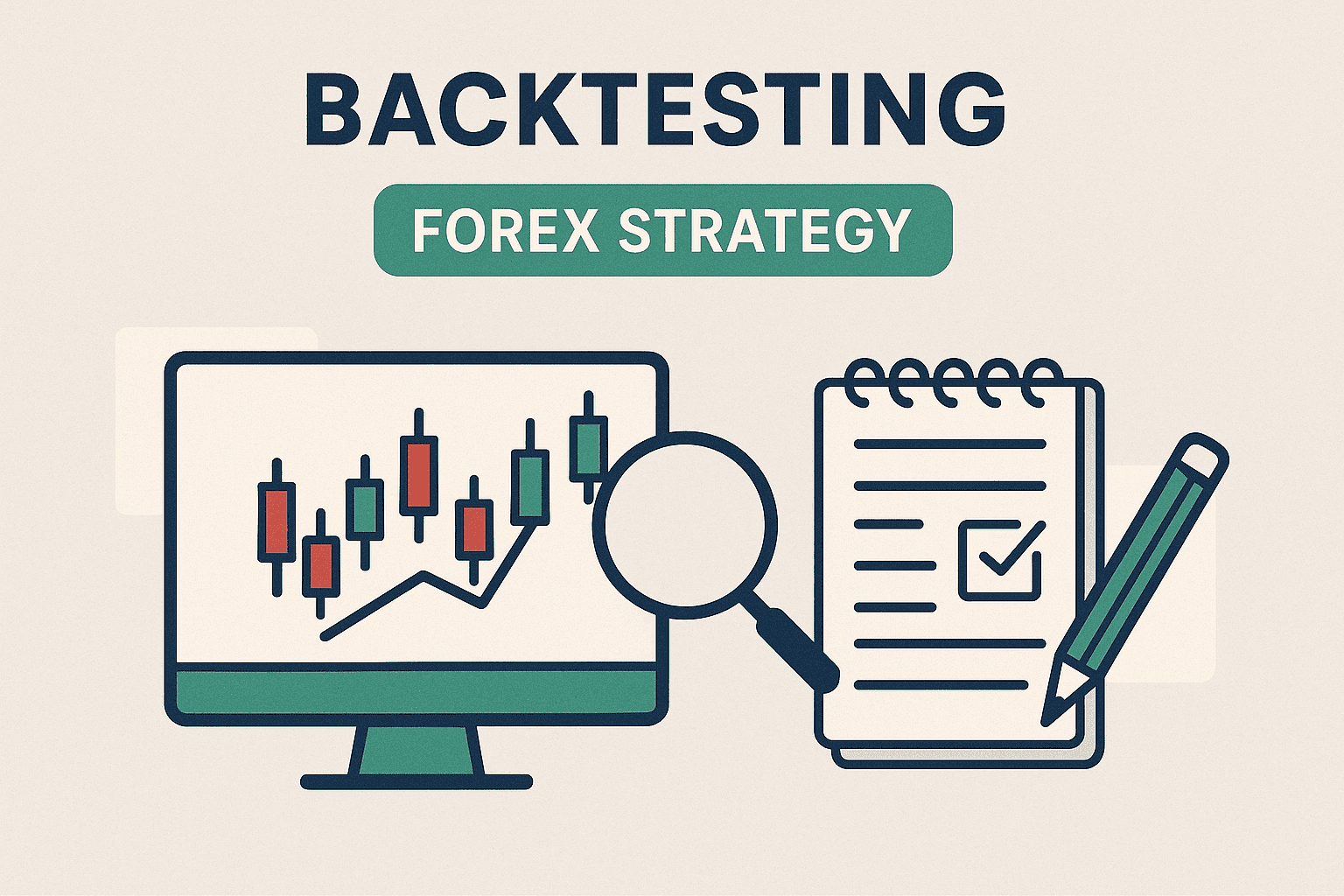
How to Backtest a Forex Strategy
What is Backtesting in Forex?
Backtesting is the process of testing a trading strategy on historical price data to see how it would have performed in the past. While past performance doesn’t guarantee future results, it helps identify the robustness and flaws of a system before using real money.
Why Backtesting Matters
Backtesting offers critical insights:
- Validates your trading hypothesis
- Highlights potential profitability
- Helps refine your rules and parameters
- Builds psychological confidence
If you skip this process, you’re trading blind.
Manual vs. Automated Backtesting
Manual Backtesting:
You scroll through historical charts and mark entries/exits manually. It’s slow but gives you a feel for market behavior.
Pros: Better chart experience, no coding needed
Cons: Time-consuming and prone to bias
Automated Backtesting:
Uses software to simulate trades automatically based on coded strategy rules.
Pros: Fast, consistent, and accurate
Cons: Requires coding or using platforms with scripting (like Pine Script in TradingView or MQL4 in MetaTrader)
Tools You Can Use
- MetaTrader 4/5: Best for algorithmic backtesting with Expert Advisors (EAs)
- TradingView: Ideal for manual and Pine Script-based backtesting
- Forex Tester: A dedicated desktop tool for Forex strategy testing
- Excel/Google Sheets: Useful for custom data analysis and performance tracking
Link: TradingView | Forex Tester | Investopedia Backtesting Guide
Step-by-Step Backtesting Process
- Define your strategy
Example: RSI below 30 → Buy, RSI above 70 → Sell - Pick your instrument and timeframe
Start with EUR/USD or XAU/USD on H1 or Daily - Load historical data
Make sure you have enough candles (e.g., 5–10 years) - Mark every trade
Note entry, stop loss, take profit, and trade duration - Log the trades
Use a spreadsheet or journal template to track metrics - Review and refine
Did it meet your expectations? Adjust risk/reward or filters
What Metrics to Analyze
- Win rate (%)
- Risk-to-reward ratio (R:R)
- Maximum drawdown
- Profit factor
- Expectancy per trade
- Number of trades per month/year
These help assess whether your strategy is scalable and sustainable.
Common Mistakes to Avoid
- Cherry-picking data to fit the outcome
- Using too small of a data sample
- Ignoring slippage and spread
- Over-optimizing (curve fitting)
- Not accounting for news events and low-liquidity periods
Pro tip: Avoid optimizing to perfection. Focus on consistency and robustness.
Final Thoughts and Best Practices
- Backtest at least 100 trades for reliability
- Always use realistic settings (spread, commissions)
- Document everything in a trading journal
- Use backtesting to complement forward testing
- Don’t trust a strategy that only works in one market phase
When done properly, backtesting can bridge the gap between strategy development and confident execution.
🚀 I've been trading for more than two decades, and as you could imagine, in this time, I've tested a lot of brokers. However, there's one brokerage firm that has consistently stood out to me, and I wholeheartedly recommend it to fellow traders and investors - TradeNation.
Trade with my preferred broker, TradeNation! You can open an account HERE.
Find out why I chose this broker HERE!
Tag:forex, forex education, xauusd







